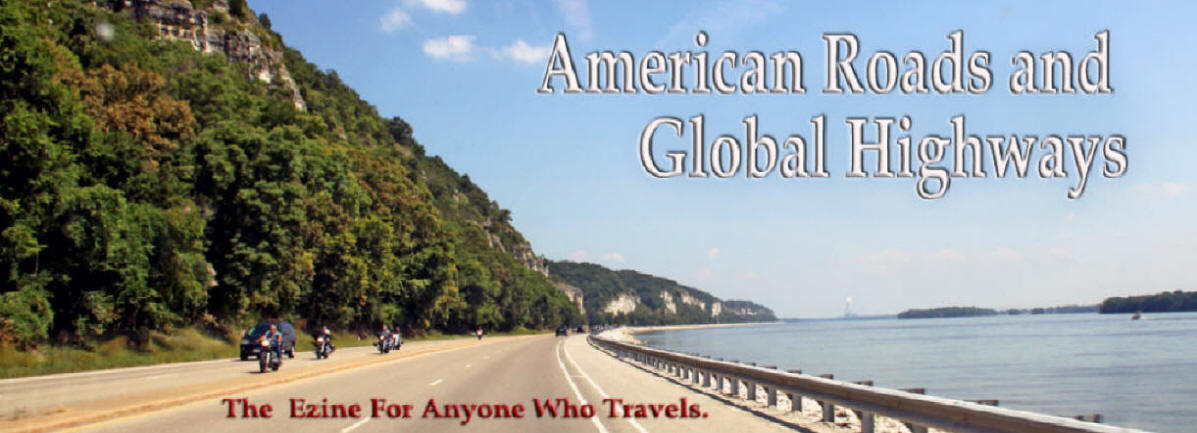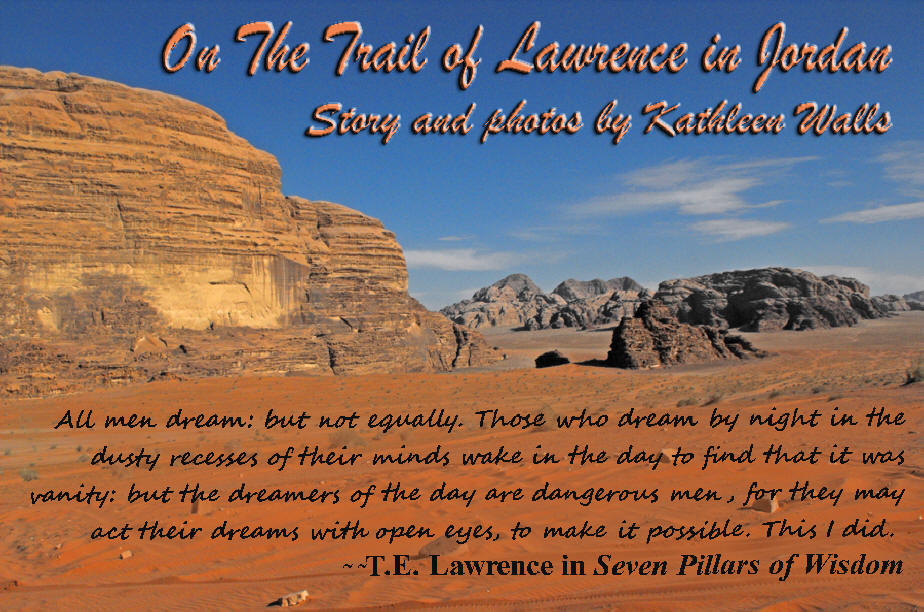This April we commemorate the entrance of
the United States into WWI. Almost all countries were impacted by
WWI but one that I recently visited played a unique part in the war.
We often feel that one person who is neither a king or ruler or even
a high-ranking official can't have much impact on history or world
events. But one "little" person did have a tremendous effect on the
events that transpired in that war and perhaps still influence world
conditions today. T.E. Lawrence was a young British army sent to the
Middle East before American became involved in the war. He was a
slim wiry young man that stood about 5'5" but he cast a tall shadow
over future world events. The world remembers him today as Lawrence
of Arabia.
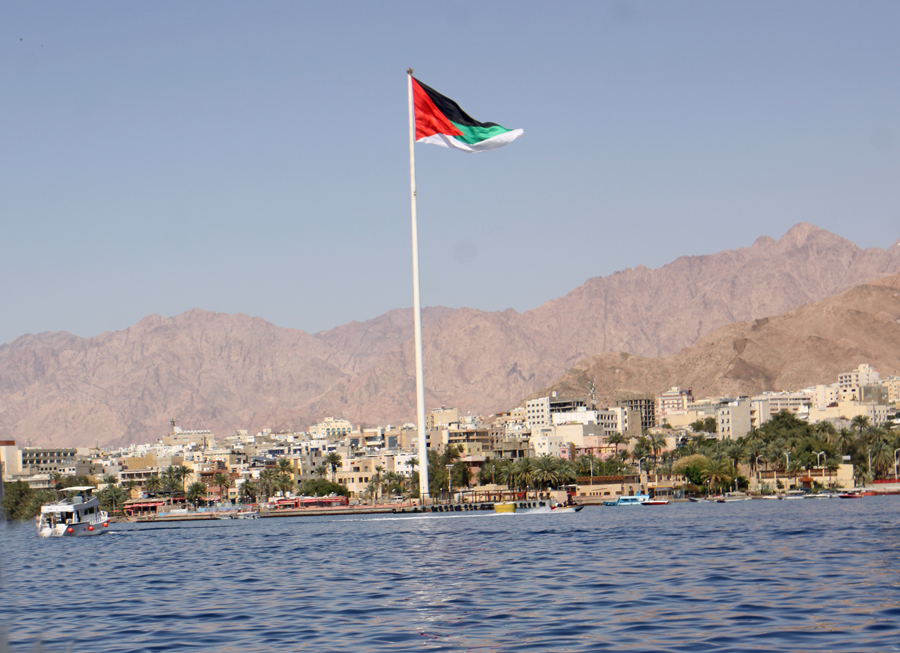 |
| Flag of the Great Arab Revolt flying over Aquaba |
You can visit many of the sites involved
in Lawrence's time in Jordan. It's a trip that made a lasting
impression on me. The great-uncle of the Hashemite Kingdom of
Jordan's present king, Abdullah II, was Faisal, the Arab leader that
Lawrence advised and fought besides. Jordan is safe and very
welcoming to foreign tourists. Unfortunately, Turkish sites are less
safe to visit.
Here are my favorite Lawrence sites in
Jordan:
Amman
In the second afternoon we reached
the railway just above Zerga, the Circassian village north of Amman.
The hot sun and fast riding had tried our camels, and Zaal decided
to water them at a ruined Roman village, the underground cisterns of
which had been filled by the late rains. –T. E. Lawrence
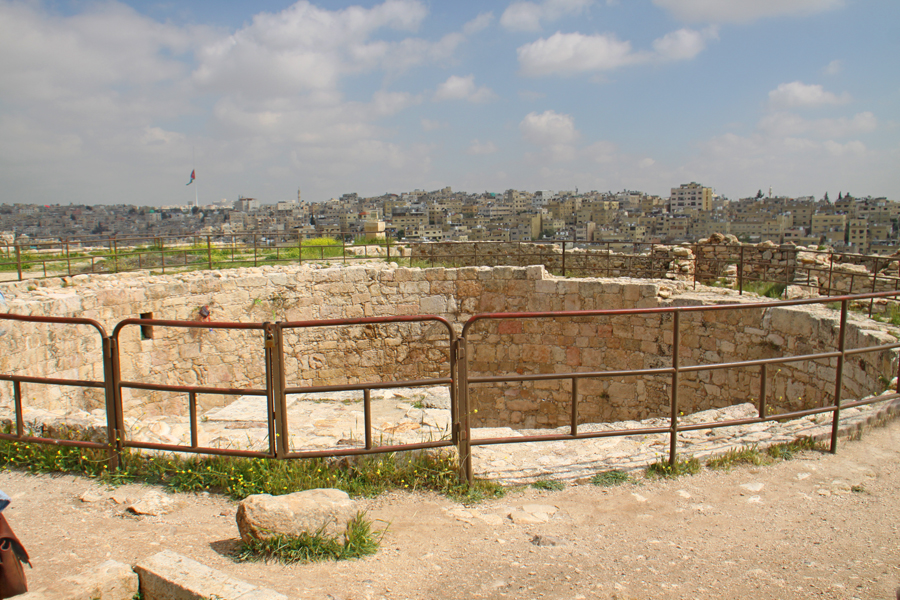 |
| The Cistern at The Citadel in Amman. Jordan |
One of the most important objectives
related to Amman, then just a sleepy village, was the Hejaz Railway.
It was the lifeline of the Ottoman Empire. Lawrence personally blew
up 79 railway bridges. He strove to leave a bridge "scientifically
shattered" useless and barely standing. The Turks then had to take
down the rubble before repairs could begin. Today, the only portion
of the railway remaining is from Amman to Damascus but due to the
war, you cannot ride that far.
The Jordan Hejaz Railway Corporation
still does some trips to Al-Jeezah station near Queen Alia
International Airport, and to Al Qaser station- Umm Al Hiran near
the Radio and Television Corporation, and to Al-Zarqa and Al-Mafraq.
There is a small museum near the Amman station.
The "ruined Roman village" Lawrence
referred to is well worth a visit. It is The Citadel, site of the
ancient city of Rabbath-Ammon. It towers on the highest hill over
modern Amman and was occupied since the Bronze Age, around 720 AD.
The cistern he spoke of is the Umayyad Cistern. A marvelous bit of
ancient architecture; it shows the knowledge these people had of
construction. It is an enormous circular holding pit built of stone
with steps leading down to the bottom. It supplied water to the
palace and the adjourning homes. Lawrence's men and camels must have
been thrilled to see it.
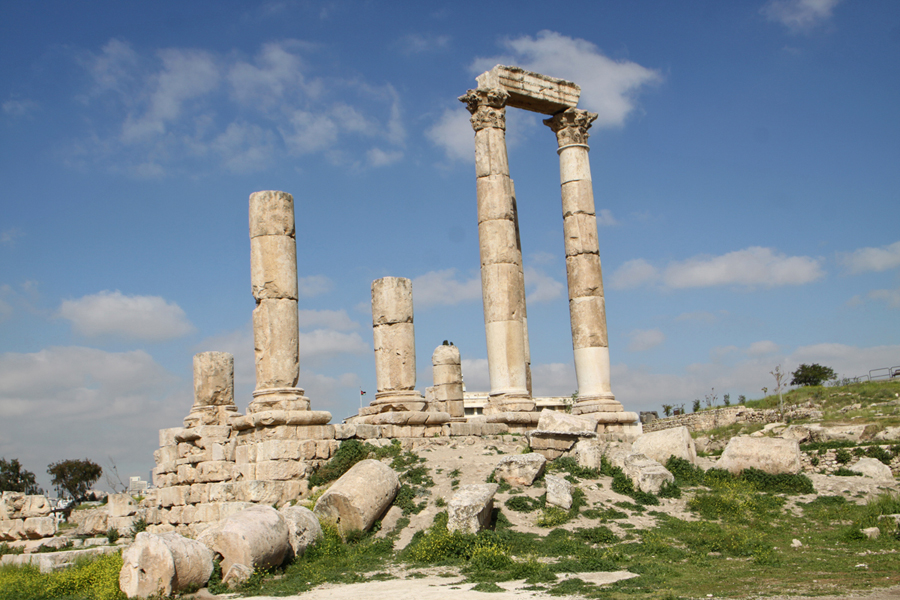 |
| The Temple of Hercules at The Citadel in Amman. Jordan |
Other things you want to be sure and see
there include the Temple of Hercules, a Byzantine church, and the
Umayyad Palace. The fingers on display as "Hercules' Fingers" have
created debate. Many people feel the fingers look feminine and not
meant to represent Hercules. When the temple was originally
unearthed there was no indication to which god it was dedicated.
Archeologists chose Hercules arbitrarily. The fingers were unearthed
later.
The Jordan Archaeological Museum there
gives a good overlook of Jordan's archeology dating from prehistoric
times to the 15th century. The Citadel is considered one
of the oldest continually occupied places on earth.
About 62 miles east of Amman, on the
highway to Iraq, you can visit one of the desert castles, Qasr
al-Azraq built of local black basalt rocks that gives it its name,
the Black Fortress. This structure dates to the early 13th century
A.D., but there were earlier structures there. It served as
Lawrence's headquarters during the winter of 1917.
Petra
I
have read hosts of the most beautifully written accounts of it, and
they give one no idea of it at all…so you will never know what Petra
is like, unless you come out here… Only be assured that till you
have seen it you have not had the glimmering of an idea how
beautiful a place can be. - T.E. Lawrence February
1914.
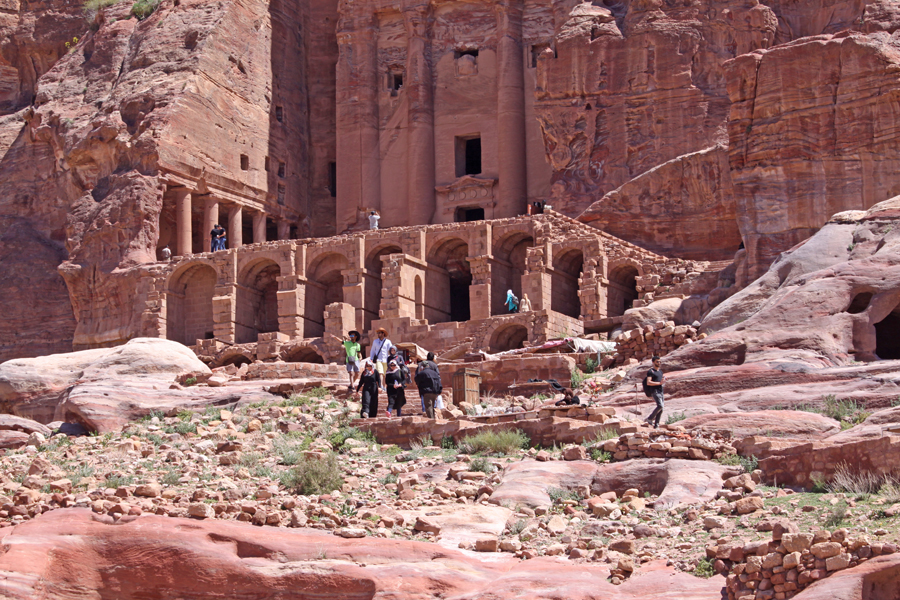 |
| One of the many buildings at Petra |
Lawrence visited Petra first as an
archeologist before his army service. It is the most beautiful
archeological ruins in Jordan, perhaps the world. Battle of Wadi
Musa, as the battle at Petra was called, fought was on October 23,
1917. Based on his own account in the
Seven Pillars of Wisdom,
It is doubtful if Lawrence was actually involved in the fighting.
(See here for more about Petra)
Wadi Rum
Our little caravan fell quiet, afraid and ashamed to flaunt its
smallness in the presence of the stupendous hills.
–T. E. Lawrence
Just the vastness of Wadi Rum will humble
you. The best way to experience it as Lawrence did is by booking
either a four-wheel drive tour or a camel trek into the desert. The
camel ride is a bit rough on your hindquarters. One thing I learned
was when your camel begins to rise hold tight to both the front and
back horn to keep from being tossed off.
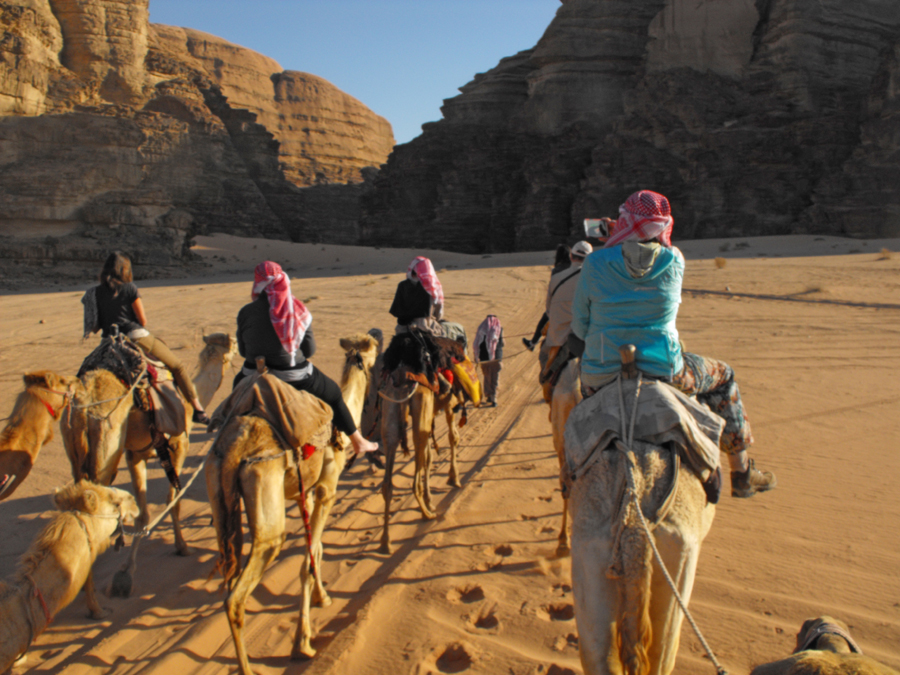 |
| Part of our camel caravan in Wadi Rum |
A way to experience the desert even more as he did is to book a stay at one of the Captains Camps where you spend the night in the desert in a real Bedouin tent and enjoy a meal of meat, and vegetables cooked in a large closed metal pan buried on a bed of hot coals and covered with sand called a zarb. (For another Bedouin experience go here)
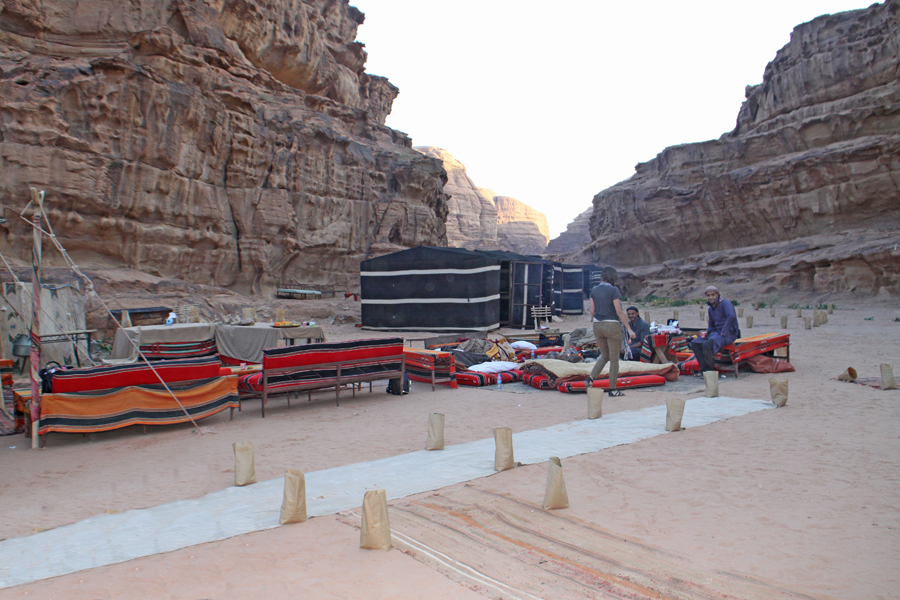
Our private Captains Camp in Wadi Rum
Deep in the desert your tour guide will probably show you some ruins they claim was Lawrence's house. In reality it was an old Nabataean structure rebuilt for use as a tariff point and rest-stop for caravan travelers prior to Lawrence's arrival. Probably Lawrence did spend time there but it was not built for him. (For more on Wadi Rum go here.)
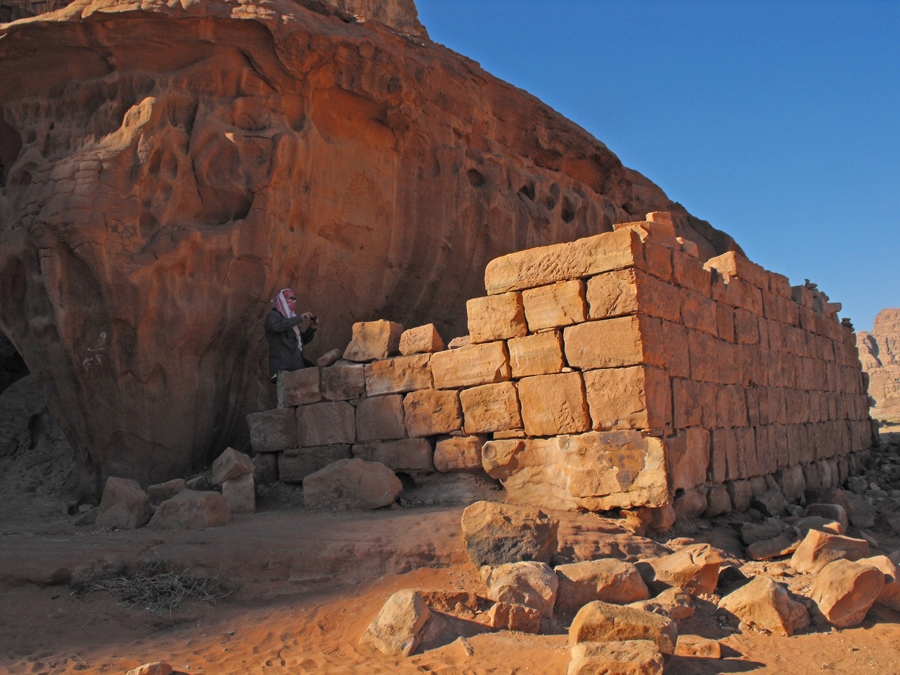 |
| "Lawrence's house" in Wadi Rum |
Aqaba
Akaba was the indispensable first. –T. E. Lawrence
Aqaba is Jordan's only seaport and exit
to the Red Sea; vital to both armies during WWI. Today it's a big
tourist destination with lots of things to do. The beach is
refreshing after all the desert. There is a small museum and some
ruins. Flying above the seaport on the world's highest flagpole
waves the proud Jordan Revolt Flag.
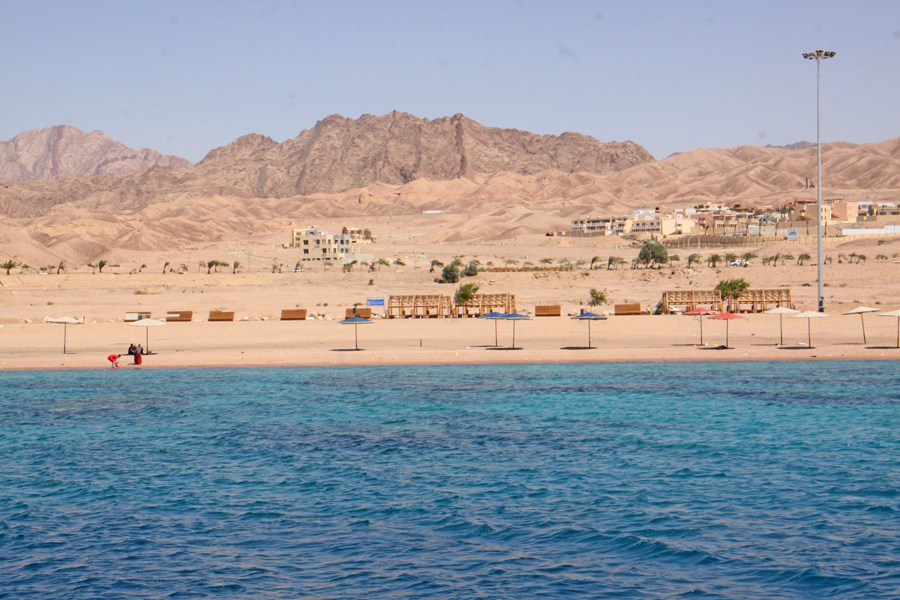 |
| Beach at Aquaba much as Lawrence and Arab raiders would have seen it minus the tourist touchs. |
Snorkeling and scuba are big here so a
yacht cruise is a great way to relax after the desert experience. I
was on Sea Guard's Barakah
but Sea Guard has other boats and there are other companies, as well
as glass-bottomed boats, and other individual excursion. Make your
reservations ahead of time.
From the water looking at the beaches and
recalling the terrain of Wadi Rum behind Aqaba, you have a better
understand of what a feat it was when Lawrence and his Bedouin army
swooped down on the undefended rear of the city.
The Souk here is filled with real
Jordanian items. Visit a spice merchant, Al-Baba Spice and Coffee.
He will offer you a cup of tea and samples of his spices. You'll
find scarves and head gear, silver jewelry, clothing and just about
any other item you want.
Would Lawrence be surprised at the state
of affairs in the Middle East today? Probably not. When the
Arabs revolted against the Turkish Ottoman Empire, Great Britain
promiused them an independent Arab state. At the time they made the
promise they were aware it was a lie. Great Britain and France had
already signed a prior agreement dividing the Arab states among
themselves. At the Paris Pease Convention, our own President Wilson
stood with France and Great Britain and allowed this lie to Prince
Faisal and the Arab people to prevail. Lawrence knew something of
the Sykes-Picot Treaty when he rode with Faisal but eased his
coconscious by believing that if only the Arabs could prove their
worth as allies the treaty would be disregarded. To this day, the
movie Lawrence of
Arabia is banned in
Jordan.Thje peole ther have very mixed feelings about him. When
ISIS proclaims their jihadist propaganda, they do so often using a
video entitled The End of
Sykes-Picot.
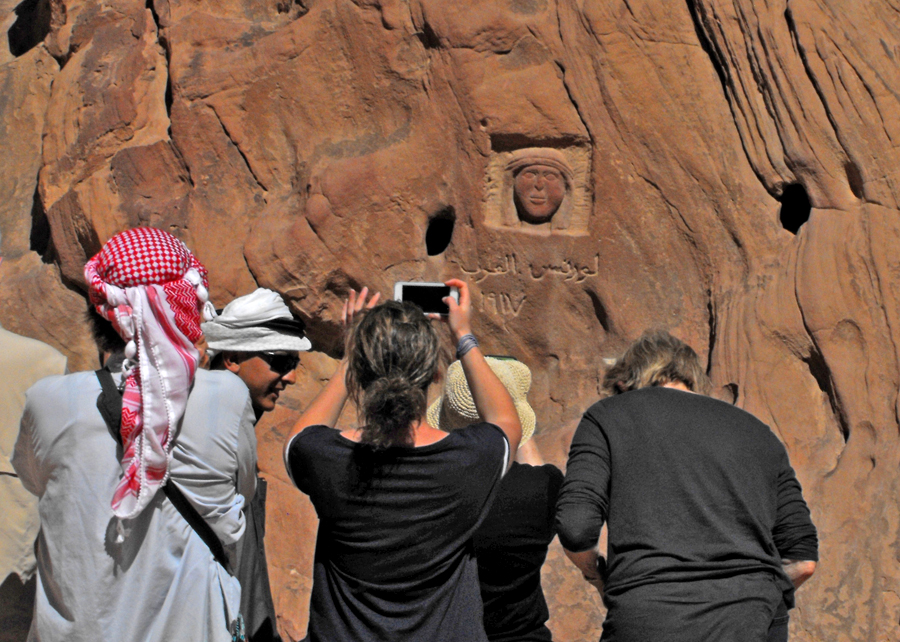 |
| Carving of Lawrence of Arabia's face in Wadi Rum is a popular photo op. |
I do want to make clear one point here.
Many have debated Lawrence's actual role in the conflict. In his
book, Seven Pillars of Wisdom,
he makes it clear he doesn't claim to be a major player.
My proper share was a minor
one, but because of a fluent pen, a free speech, and a certain
adroitness of brain, I took upon myself, as I describe it, a mock
primacy. In reality I never had any office among the Arabs: was
never in charge of the British mission with them. –T. E.
Lawrence
Yet today, he is remembered when many
other "bigger names" are forgotten. People today visit Jordan to
see the things Lawrence described in his book. To stand where he
stood. To visualize the events he lived.
No
man can live this life and emerge unchanged. He will carry the
imprint of the desert… and he will have within him the yearning to
return…. For this cruel land can cast a spell which no temperate
clime can match. . –T. E. Lawrence
If you visit Jordan, beware, having once
visited this enchanted land you too will "yearn to return."
Brief timeline regarding
Jordanian and American
involvement in WWI:
May 7, 1915
GERMAN U-BOAT TORPEDOES THE LUSITANIA
The Lusitania, torpeodoied in British waters. Loss of lives, 1,198 drown, including many women and children and 124 U.S. citizens.
March 24, 1916
sinking of the passenger ship, Sussex
Neutral ship torpeoded by Germany Navy
May 10, 1916
SUBMARINE WARFARE IS SUSPENDED
President Woodrow Wilson threatened ending relations with Germany. Tthe Germans agree to cease unrestricted submarine warfare.
May 16, 1916
SECRET PACT DIVIDES MIDDLE EAST BETWEEN
BRITISH AND FRENCH INTERESTS
The Sykes-Picot Agreement
signed giving Syria and Lebanon to France, while Britain claims Jordan, Iraq, the Gulf states and the
Palestinian Mandate.
June 5, 1916
ARAB REVOLT IN THE HEJAZ BEGINS
November 7, 1916
U.S. PRESIDENT WOODROW WILSON IS
REELECTED
He ran on the slogan, "He kept
us out of war."
April 1, 1917
GERMAN U-BOAT SINKS THE S.S. AZTEC
Once again an American steamer torpedoed by a German U-boat in British waters. Twenty-eight Americans dead
April 6, 1917
THE UNITED STATES DECLARES WAR ON GERMANY
January 4, 1919
PEACE CONFERENCE CONVENES IN PARIS WITH
PRELIMINARY MEETINGS
August 10, 1920
TREATY OF SEVRES ENDS THE WAR ON THE
EASTERN FRONT WITH THE OTTOMAN EMPIRE
Arab countries are divided pretty much as the Sykes-Picot Treaty agreed. Faisal was made king of Iraq. In 1946, Jordan became an independent state officially known as The Hashemite Kingdom of Transjordan. Abdullah I bin al-Hussein, Faisal's brother, was named King of Jordan.
